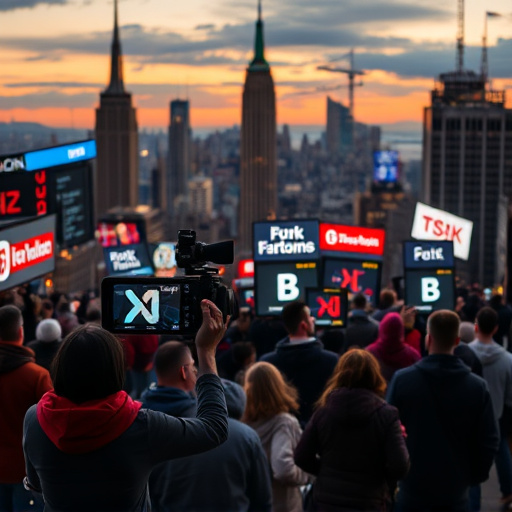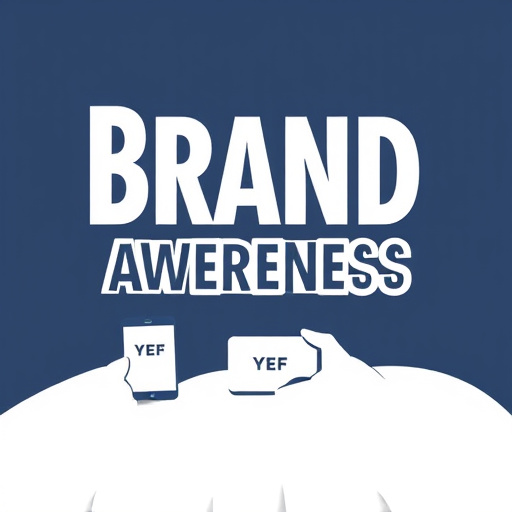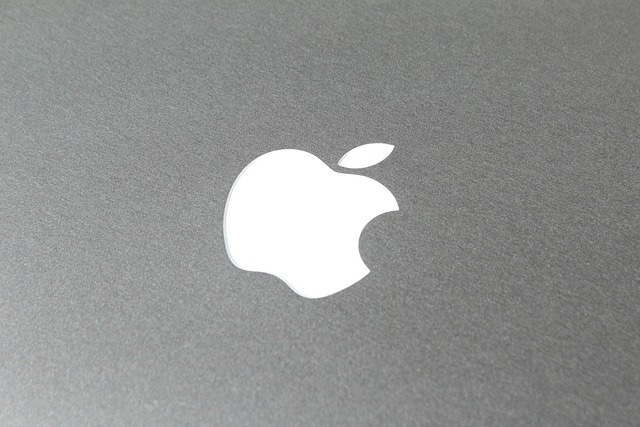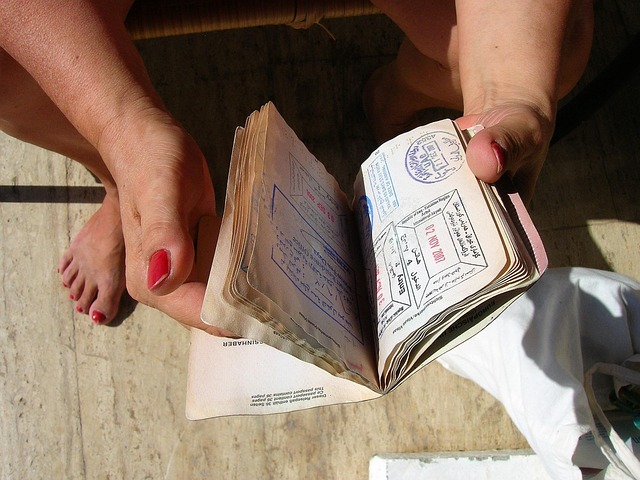Brand Awareness: Unlocking the Power of Consumer Recognition
Introduction
In today’s highly competitive marketplace, brand awareness has emerged as a powerful force that shapes consumer behavior and business success. It is the cornerstone of any successful marketing strategy, enabling companies to cut through the noise and establish meaningful connections with their target audiences. This comprehensive article aims to unravel the complex concept of brand awareness, exploring its various facets, global impact, economic implications, and the role of technology, policy, and emerging trends. By delving into these aspects, we will provide valuable insights for businesses striving to build robust and enduring brands.
Understanding Brand Awareness: Unveiling the Concept
Definition: Brand awareness is a powerful marketing metric that refers to the degree to which a brand is recognized, remembered, and considered by its target consumers. It represents the sum of all the sensory experiences, thoughts, and feelings that shape an individual’s perception of a particular brand.
Core Components:
- Recognition: The most fundamental aspect, ensuring consumers can identify and recall a brand when confronted with its logo, name, or product.
- Memorability: Encouraging consumers to retain brand information over time, fostering long-term loyalty.
- Consideration: Going beyond recognition, it involves influencing potential customers’ thoughts and decisions when considering a purchase.
- Brand Image: This includes the values, attributes, and associations that shape the overall perception of a brand in the minds of consumers.
Historical Context: The concept of brand awareness has evolved over time, especially with advancements in marketing techniques and consumer psychology research. Historically, brands were primarily associated with product identification, but modern branding transcends this, focusing on creating emotional connections and unique brand identities.
Global Impact and Trends: A World-Wide Phenomenon
Brand awareness is a global phenomenon, but its manifestation varies across regions, influenced by cultural differences, local markets, and economic factors. Here’s an overview of its international reach:
| Region |
Key Trends |
Notable Influences |
| North America |
Digital branding dominance: Online platforms and social media play a pivotal role in shaping brand awareness in the US and Canada. Influencer marketing is also on the rise. |
Tech giants like Apple and Coca-Cola have successfully harnessed digital avenues to build global brand recognition. |
| Europe |
Cultural diversity impacts brand perception: Brands must adapt to diverse European markets, with varying preferences and regulations. |
Local brands like L’Oréal and IKEA have achieved strong awareness through tailored marketing strategies for different European countries. |
| Asia Pacific |
Rapidly growing middle class: The rise of a substantial middle class in countries like China and India has led to increased consumer spending power, impacting brand awareness efforts. |
Chinese e-commerce giants Alibaba and JD.com have utilized digital platforms to create strong brand identities. |
| Latin America |
Emotional connections: Brands often tap into cultural heritage and emotions to build awareness, especially in Mexico and Brazil. |
The iconic brand Pelé has successfully promoted football (soccer) as a national passion while endorsing sportswear brands. |
| Middle East & Africa |
Expanding luxury markets: With growing economies, the region witnesses a surge in luxury brand awareness campaigns. |
Brands like Louis Vuitton and Gucci have established a strong presence through exclusive marketing events and partnerships with local influencers. |
Economic Considerations: Brand Awareness as a Driver of Markets
Brand awareness plays a pivotal role in economic systems, influencing market dynamics and consumer behavior. Here’s an analysis of its economic implications:
- Market Competitiveness: High brand awareness can lead to significant market share for companies, giving them pricing power and influence over industry standards.
- Consumer Spending: Well-known brands often command higher prices due to perceived quality and loyalty, contributing to increased consumer spending in certain sectors.
- Investment Opportunities: Investors view strong brand recognition as a positive indicator, attracting investments for expansion and new product launches.
- Economic Growth: Successful branding campaigns can stimulate local economies, especially in tourism and retail industries, by attracting visitors and boosting sales.
Technological Advancements: Revolutionizing Brand Awareness
Technology has revolutionized the way brands interact with consumers, creating unprecedented opportunities for awareness and engagement. Key advancements include:
- Digital Marketing: Online advertising, social media, content marketing, and search engine optimization (SEO) have transformed brand promotion. Personalized digital campaigns allow for precise targeting of specific demographics, increasing awareness among relevant audiences.
- Mobile Technology: With the widespread adoption of smartphones, mobile apps, and location-based services, brands can now deliver hyper-local experiences, enhancing awareness through proximity marketing.
- Artificial Intelligence (AI): AI-powered chatbots and virtual assistants offer 24/7 brand engagement, while predictive analytics helps tailor marketing strategies to individual preferences.
- Virtual Reality (VR) and Augmented Reality (AR): These immersive technologies enable brands to create unique, interactive experiences, providing consumers with a deeper connection to products or services.
Policy and Regulation: Navigating the Legal Landscape
The legal framework surrounding brand awareness is designed to protect consumer interests and promote fair competition. Key policies and regulations include:
- Trademark Laws: These protect brand names, logos, and symbols, ensuring exclusive rights to their owners. Trademark violations can lead to legal action and financial penalties.
- Advertising Standards: Regulatory bodies oversee advertising content to prevent misleading or deceptive practices, ensuring brands uphold ethical standards in their marketing campaigns.
- Data Privacy Regulations: With the rise of digital branding, data privacy laws like GDPR (General Data Protection Regulation) govern how companies collect and use consumer data for personalized marketing.
- Anti-Monopoly Laws: Authorities monitor brand dominance to prevent market manipulation and ensure fair competition, especially in industries with high brand awareness potential.
Challenges and Criticisms: Overcoming Obstacles
Despite its importance, brand awareness faces several challenges and criticisms that organizations must address to ensure long-term success:
- Saturation: In crowded markets, it becomes increasingly difficult for brands to stand out, requiring innovative strategies to capture consumer attention.
- Short-Term Focus: Some marketing efforts may prioritize quick gains over building lasting brand equity, leading to a lack of depth in brand awareness.
- Cost Implications: Developing strong brand awareness can be resource-intensive, with significant investments required for research, creative campaigns, and digital infrastructure.
- Criticism of ‘Brand Washing’: This term refers to the practice of using branding to deflect negative associations or social responsibilities, which can backfire and harm brand reputation.
Actionable Strategies: To overcome these challenges, companies should focus on authentic storytelling, deliver consistent value, foster community engagement, and embrace transparency in their branding efforts.
Case Studies: Real-World Success Stories
1. Nike: From Sportswear to Global Icon
Nike’s journey from a small sportswear company to a global brand is an exemplary case study. By focusing on innovation, athlete endorsements, and compelling marketing campaigns, Nike built a strong brand identity. Their “Just Do It” slogan became a cultural mantra, encouraging consumers to embrace an active lifestyle. Nike’s success demonstrates the power of aligning brand values with consumer aspirations.
2. Dove: Redefining Beauty Standards
Dove’s campaign “Real Beauty” challenged traditional beauty ideals and body image perceptions. Through powerful storytelling and consumer engagement initiatives, Dove built a positive brand image, fostering a sense of community among women worldwide. This case highlights the impact of using brand awareness to drive social change.
3. Airbnb: Disrupting the Travel Industry
Airbnb’s unique value proposition disrupted the traditional travel industry by connecting locals with travelers seeking authentic experiences. Their powerful branding, leveraging user-generated content and word-of-mouth marketing, contributed to their rapid global expansion. Airbnb’s success showcases how brand awareness can drive market disruption.
Future Prospects: Emerging Trends and Growth Areas
The future of brand awareness is filled with exciting possibilities, driven by technological advancements and evolving consumer behaviors. Here are some key trends shaping the landscape:
- Personalized Branding: With AI and data analytics, brands will increasingly tailor their messaging to individual consumers, creating hyper-personalized experiences.
- Influencer Marketing 2.0: Beyond traditional influencers, brands will collaborate with niche experts, micro-influencers, and community leaders to build trust and authenticity.
- Immersive Experiences: VR and AR technologies will continue to enhance brand engagement, offering interactive product demonstrations and virtual showrooms.
- Sustainability as a Brand Differentiator: Consumers are increasingly conscious of environmental issues, and brands that communicate sustainability credentials effectively will gain an advantage.
- Omnichannel Integration: Seamless integration across all touchpoints, from online to offline, will be crucial for delivering consistent brand experiences.
Conclusion: Navigating the Brand Awareness Landscape
Brand awareness is a dynamic and multifaceted concept that continues to evolve with technological advancements and shifting consumer preferences. As businesses navigate the complex global market, understanding and harnessing the power of brand awareness becomes essential for long-term success. By leveraging authentic storytelling, innovative marketing techniques, and a deep understanding of their target audiences, companies can build robust brands that resonate with consumers worldwide.
FAQ: Answering Common Brand Awareness Questions
Q: How important is brand awareness for small businesses?
A: Brand awareness is crucial for all businesses, regardless of size. Small businesses can leverage local communities, word-of-mouth marketing, and targeted digital campaigns to build strong brand recognition, competing effectively with larger corporations.
Q: Can brand awareness be measured quantitatively?
A: Yes, various tools and metrics exist to measure brand awareness, including surveys, focus groups, social media analytics, and brand equity research. These provide valuable insights into consumer perceptions and the effectiveness of branding strategies.
Q: Is it possible to have too much brand awareness?
A: While strong brand awareness is desirable, excessive focus on branding without delivering value can lead to negative perceptions. Brands should strive for balance, ensuring that awareness efforts align with customer expectations and loyalty.
Q: How does cultural diversity impact global brand strategies?
A: Cultural sensitivity is vital when adapting brand messages for global markets. Companies must respect local customs, languages, and preferences while maintaining brand consistency to build meaningful connections worldwide.
Positive online reviews, crucial for building customer trust, influence local search rankings via platforms like Reviewly Local Search. Businesses encouraging satisfied customers to leave reviews strengthen their online presence and foster commu…….
Continue Reading
User Experience (UX) is a critical component of brand strategy, impacting user engagement, loyalty, and reputation. In the digital age, authentic consumer reviews are powerful tools for brands aiming to enhance BA. Satisfied users sharing genuin…….
Continue Reading
In today's digital landscape, Reviewly Local Search is a crucial tool for businesses seeking to build trust through positive customer feedback. By encouraging satisfied customers to share their experiences on platforms like Reviewly Local S…….
Continue Reading
TL;DR:Reviewly Local Search, powered by AI, revolutionizes local business visibility by integrating user-generated reviews into search engine results, driving foot traffic and conversions. This tool optimizes review content, enhances engagement,…….
Continue Reading
In the digital age, online reviews significantly impact consumer decisions and brand reputation. Reviewly Local Search offers AI-powered solutions for businesses to actively manage and enhance their online image. By analyzing customer feedback a…….
Continue Reading
In today's digital era, Reviewly Local Search specializes in maximizing local SEO potential for businesses aiming to connect with nearby customers. They offer expert guidance on claiming listings, optimizing location-based keywords, and cre…….
Continue Reading
In today's digital world, Brand Awareness is crucial for business success. Reviewly offers optimization tools to enhance this, including strategic keyword placement, content creation, and review management. By boosting local search rankings…….
Continue Reading
Brand Awareness is vital for business success, driving loyalty and trust through recognizable brands with positive associations. Reviewly is a game-changer, helping businesses of all sizes enhance brand management with centralized assets, user-f…….
Continue Reading
In today's digital age, customer feedback is a powerful tool for brands, offering insights into consumer experiences and preferences. Reviewly Local Search automates this process, transforming raw feedback into actionable insights. By integ…….
Continue Reading
User reviews are a powerful tool for businesses to enhance Brand Awareness in today's digital landscape. Positive customer testimonials significantly impact purchasing decisions, building trust with potential clients. Reviewly Local Search…….
Continue Reading
In today's digital competition, boosting Brand Awareness is key for business success. By leveraging Review Acquisition through platforms like Reviewly Local Search, companies gain social proof, attract new audiences, and enhance online repu…….
Continue Reading
In the competitive digital landscape, businesses need effective strategies to stand out and build trust with customers. Reviewly Local Search offers a powerful solution by enabling personalized review responses, direct customer engagement, and d…….
Continue Reading
Brand awareness is crucial for standing out in today's market, and proactive review campaigns are an effective strategy. By leveraging customer testimonials, businesses can boost their visibility, address concerns, and highlight unique sell…….
Continue Reading
Reviewly Local Search is a digital platform dedicated to boosting business growth through enhanced Brand Awareness. In today's digital era, online exposure is key; Reviewly leverages search engines, social media, and local listings to incre…….
Continue Reading
Reviewly Local Search offers businesses a comprehensive toolkit to thrive in the digital era. By understanding target audiences and optimizing local search strategies, companies can increase visibility and connect with nearby customers. Creating…….
Continue Reading
In today's digital era, Artificial Intelligence (AI) is a powerful tool for brands to enhance marketing efforts. Specifically, platforms like Reviewly Local Search utilize AI technologies like machine learning, NLP, and image/video recognit…….
Continue Reading
Customer feedback is crucial for brands aiming to strengthen their market position and drive Brand Awareness. By actively collecting and analyzing consumer input, businesses gain insights into customer perceptions, preferences, and issues, enabl…….
Continue Reading
Reviewly Local Search leverages intelligent review automation (IRA) to transform business-customer interactions, enhance online visibility, and drive growth. By automating review collection, categorization, and analysis, businesses save time, re…….
Continue Reading
In a competitive market, Brand Awareness is crucial for business success. AI-driven solutions offer innovative ways to enhance brand visibility through data analysis, personalized messaging, and targeted advertising. By leveraging AI in social m…….
Continue Reading


















